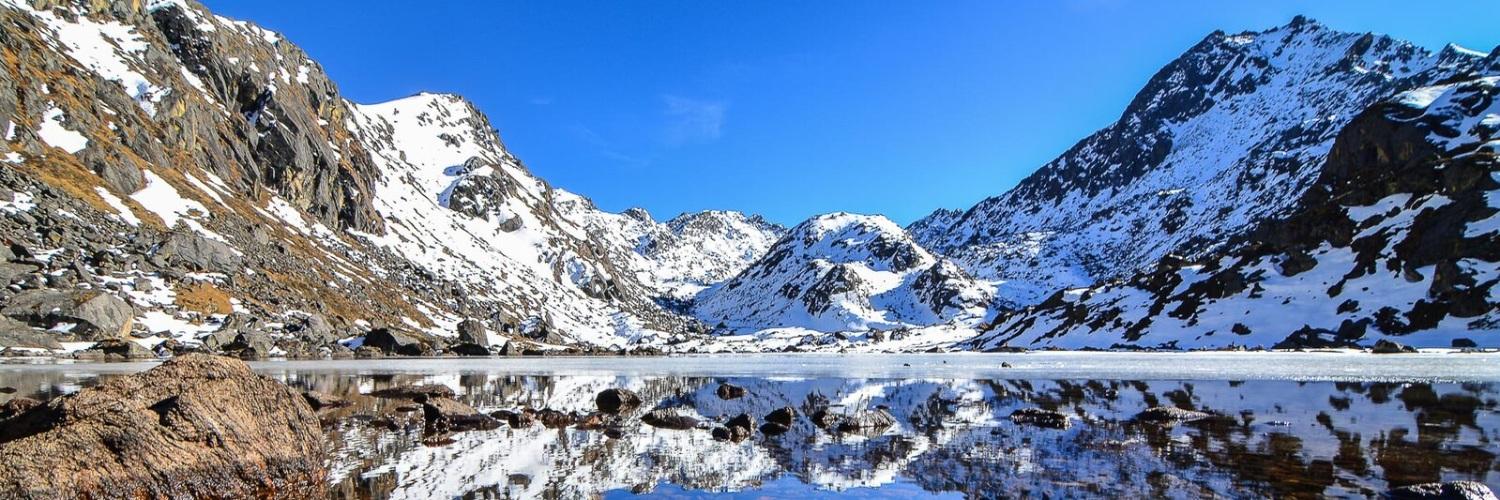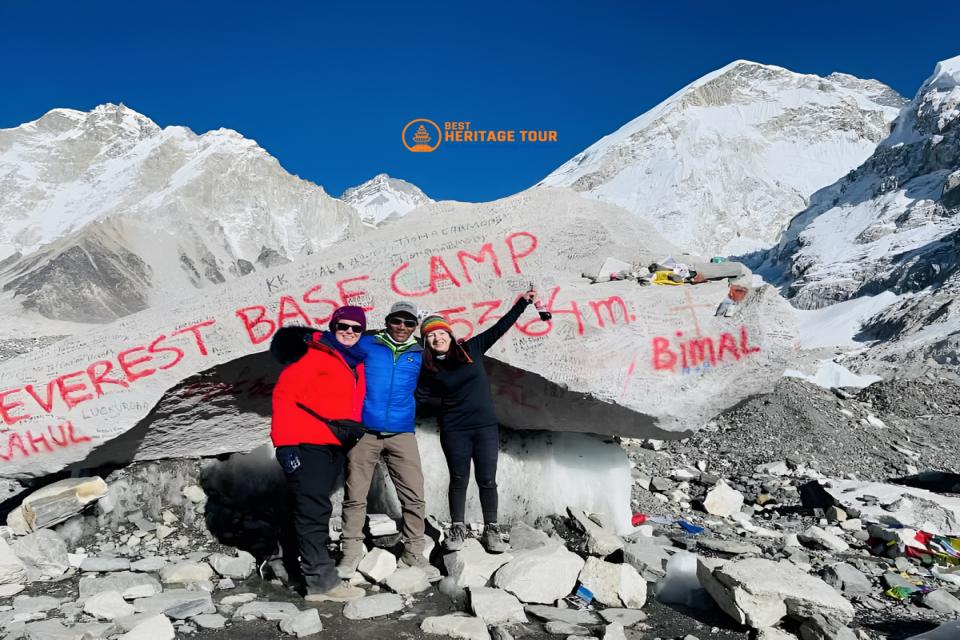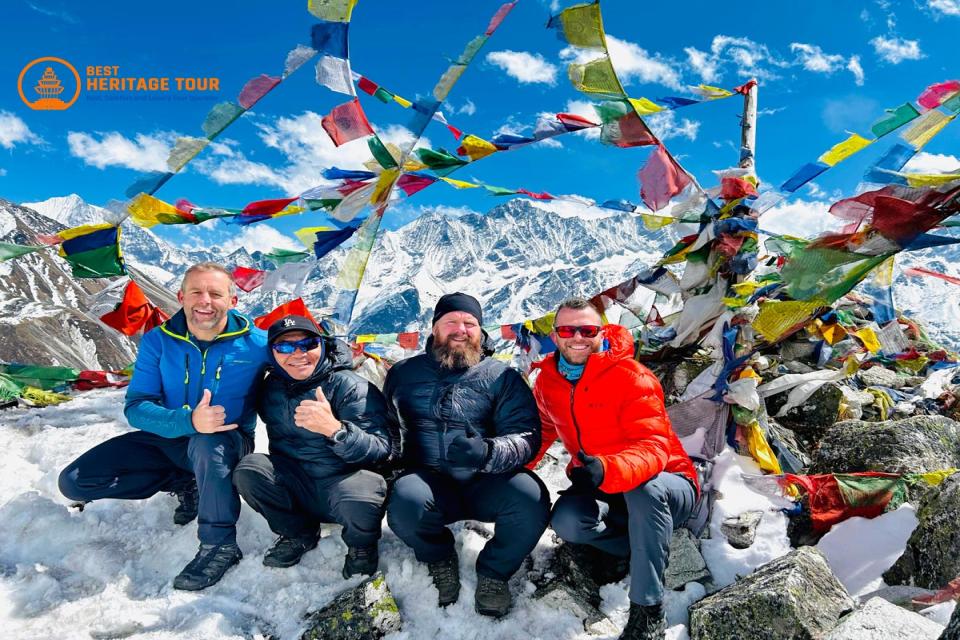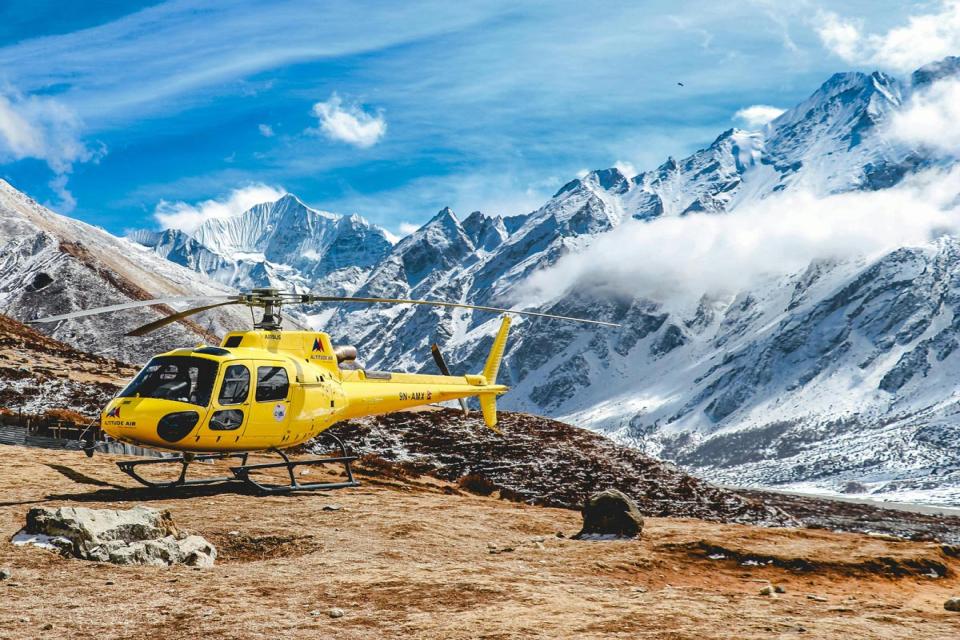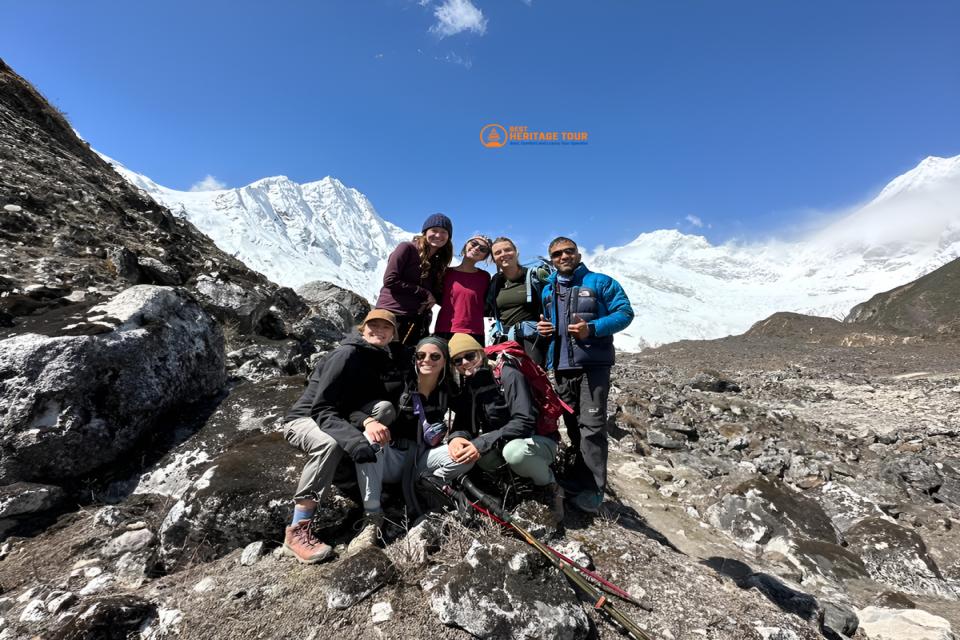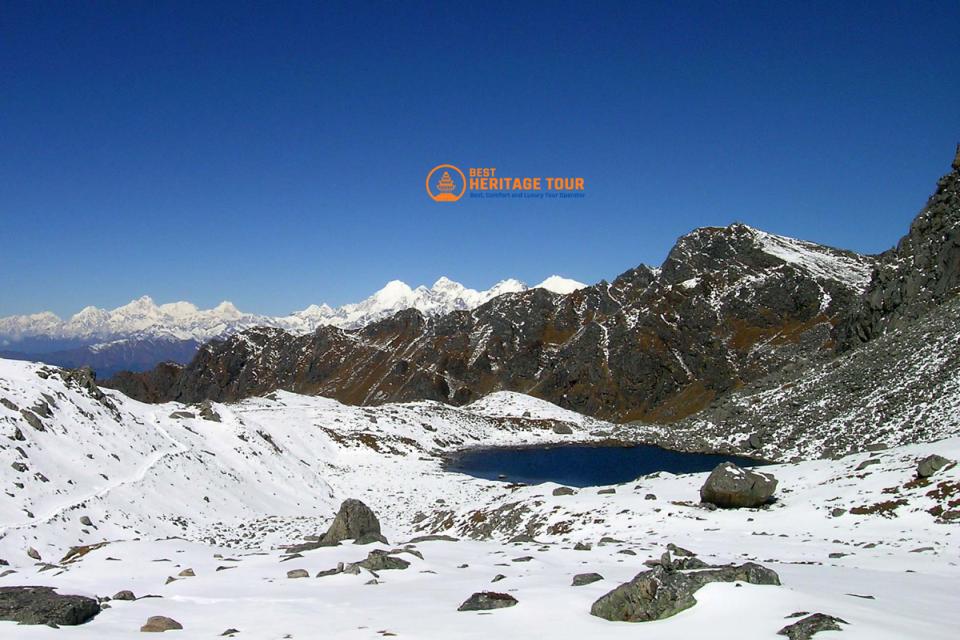The Langtang Gosaikunda Trek is a breathtaking journey through one of Nepal’s most enchanting Himalayan regions, combining alpine scenery, spiritual lakes, and rich cultural encounters. As one of the most rewarding yet accessible treks near Kathmandu, it offers an excellent alternative to the more crowded Annapurna and Everest routes.
September, the start of Nepal’s autumn trekking season, is one of the best times to explore Langtang and Gosaikunda. With fresh greenery, cleaner skies, and fewer tourists, it’s a dream for trekkers seeking scenic beauty, tranquility, and cultural immersion.
In this complete guide to the Langtang Gosaikunda Trek in September 2025/2026, we cover everything, from the detailed itinerary, weather updates, costs, gear list, and permit info to practical trekking tips. Whether you're a first-time trekker or a returning Himalayan traveler, this blog will help you plan every aspect of your adventure.
Overview of Langtang Gosaikunda Trek
The Langtang Gosaikunda Trek is a breathtaking journey combining the scenic beauty of Langtang Valley with the spiritual allure of the sacred Gosaikunda glacial lakes. This popular Nepal trekking route passes through Langtang National Park, showcasing diverse landscapes from lush forests and traditional terraced fields to alpine meadows, yak pastures, and ancient Buddhist monasteries. The trek ascends from around 1,550 meters in Syabrubesi to the high point at Lauribina La Pass (4,610 meters), offering stunning mountain views and serene turquoise lakes, making it one of the best trekking adventures in Nepal.
Distance and Duration
- Trek duration: 12–14 days, depending on the route
- Distance: Approx. 120–140 km total round-trip
- Max elevation: 4,610 m (Laurebina Pass)
Key Highlights
- Langtang Valley: Snow-capped peaks, Kyanjin Gompa, yak cheese factory
- Gosaikunda Lake: A revered Hindu pilgrimage site with stunning turquoise water
- Cultural experiences: Tamang villages, Tibetan Buddhist influence
- Wildlife: Red pandas, Himalayan thar, langurs
Langtang Gosaikunda Trek Map and Route
Typical route: Kathmandu → Syabrubesi → Lama Hotel → Langtang Village → Kyanjin Gompa → Gosaikunda → Dhunche or Sundarijal (via Helambu, optional)
Why Trek Langtang Gosaikunda in September?
September is the start of the post-monsoon season, offering lush green landscapes and clearer skies for breathtaking mountain views. With mild days and cool nights, it’s a great time to trek. Early rains may cause slippery trails, so be prepared for changing conditions.
September Weather in Langtang and Gosaikunda
- Post-monsoon season (early autumn)
- Daytime temperatures: 10–20°C in lower altitudes
- Night temperatures: -2 to 8°C, depending on elevation
- Occasional rain early in the month, but clearer skies later
Advantages of Trekking in September
- Lush landscapes from monsoon rainfall
- Crystal-clear mountain views
- Blooming flowers and active wildlife
- Fresh trails with fewer tourists compared to October
Challenges to Be Aware Of
- Slippery paths from early September rainfall
- Landslide-prone sections (Syabrubesi road)
- Leeches in lower forests wear gaiters and use salt or repellent
Langtang Gosaikunda Trek Itinerary (2025/2026)
Here’s a recommended 14-day itinerary for a balanced pace and proper acclimatization:
|
Day |
Route |
|---|---|
|
1 |
Drive from Kathmandu to Syabrubesi (1,550m) |
|
2 |
Trek to Lama Hotel (2,480m) |
|
3 |
Trek to Langtang Village (3,430m) |
|
4 |
Trek to Kyanjin Gompa (3,870m) |
|
5 |
Acclimatization day – Hike to Tserko Ri (4,984m) |
|
6 |
Return to Lama Hotel |
|
7 |
Trek to Thulo Syabru |
|
8 |
Trek to Shin Gompa |
|
9 |
Trek to Gosaikunda Lake (4,380m) |
|
10 |
Explore lakes, cross Laurebina Pass (4,610m), overnight at Ghopte |
|
11 |
Trek to Kutumsang |
|
12 |
Trek to Chisapani |
|
13 |
Trek to Sundarijal and drive to Kathmandu |
|
14 |
Extra day for flexibility or city exploration |
Weather and Trail Conditions in September
September offers clear skies, mild days, and cool nights in Langtang Gosaikunda. Trails are lush and green post-monsoon but can be muddy early on. Pack waterproof boots, layers, rain gear, and trekking poles for a safe, comfortable trek.
Temperature Ranges
- Lower altitudes (Syabrubesi, Lama Hotel): 15–25°C daytime, 5–10°C night
- Higher altitudes (Kyanjin, Gosaikunda): 5–15°C daytime, -2 to 5°C night
Trail Conditions
- Fresh vegetation and blooming wildflowers
- Occasional muddy paths and swollen streams early in the month
- Beautifully clean and green landscapes post-monsoon
Packing Advice for September
- Waterproof boots and gaiters
- Quick-dry clothing and layers
- Lightweight down jacket and rain gear
- Walking poles for slippery sections
Permits Required for Langtang Gosaikunda Trek
To trek the Langtang Gosaikunda route, obtaining the necessary permits is mandatory. You’ll need the following permits:
- TIMS Card (Trekkers' Information Management System)
- Langtang National Park Entry Permit
Where to Obtain Permits: You can get these permits at the Nepal Tourism Board office in Kathmandu or conveniently through your trekking agency or guide, who often handle the process on your behalf for ease.
Difficulty Level of the Trek for the Langtang Gosaikunda Trek in September
The Langtang Gosaikunda Trek is moderately difficult, perfect for trekkers with some experience or good fitness. It features varied terrain, moderate daily distances, and significant altitude gain, requiring preparation and endurance. While less demanding than high-altitude treks like Everest Base Camp or Manaslu Circuit, it still calls for stamina and adaptability to mountain conditions, making it accessible yet rewarding for many adventure seekers.
Why Moderately Difficult?
- Altitude: Reaches about 4,380 meters at Gosaikunda, requiring proper acclimatization.
- Trail: Mix of forest paths and steep, rocky sections, which can be slippery.
- Daily Distance: Around 5–7 hours of trekking per day, with steady elevation gain.
- Weather: Variable temperatures, from warm valleys to cold alpine zones.
- Remoteness: Some stretches have limited facilities, so be prepared.
Who Can Attempt It?
- Experienced trekkers and fit beginners with acclimatization plans.
- Those seeking a scenic, less crowded trek with cultural richness.
Tips
- Train with cardio and hiking before the trek.
- Pace yourself and stay hydrated.
- Take acclimatization days seriously.
- Consider hiring a guide for support.
Accommodation and Food Options for the Langtang Gosaikunda Trek in September
September is an excellent month to trek Langtang Valley and Gosaikunda, as the monsoon season tapers off and the weather gradually stabilizes. However, early September can still experience some residual rain and humidity, which can affect accommodation and food availability along the trekking route. Here’s what you should know to plan your stay and meals during the trek in September.
Accommodation Options: Comfortable lodging is available along most of the trekking route, though early September can be slightly quieter compared to peak months like October and November.
-
Teahouses and Lodges: Most villages have basic teahouses offering rooms with beds, blankets, and shared bathrooms. In September, some lodges may still be recovering from the monsoon season, so availability can vary. Popular stops like Langtang Village and Gosaikunda Base Camp generally have open accommodations but booking ahead is advised.
-
Camping: Camping is an option for trekkers who want flexibility or to access more remote spots. Early September nights can still be chilly, especially near Gosaikunda Lake (~4380m), so bring a sleeping bag rated for at least -5°C to stay warm.
-
Seasonal Availability: Some remote or high-altitude teahouses may be closed or partially operational during early September as the trekking season transitions from monsoon to autumn. By late September, most lodges reopen fully.
Food Options: Trekking in September means you’ll have access to warm, nourishing meals to fuel your journey, though food supply chains may still be stabilizing after monsoon rains.
-
Typical Meals Along the Trek: Teahouses serve Nepalese and Tibetan staples such as dal bhat (lentils with rice), momo (dumplings), noodles, and soups. Hot meals are essential for recovery after humid or rainy trekking days in early September.
-
Energy and Nutrition Tips: Trekking during the transition season demands good nutrition, focus on carbohydrate-rich foods like rice and potatoes, combined with proteins from lentils, eggs, or meat to maintain energy levels. Hydration is crucial, so drink plenty of boiled or treated water or herbal teas.
-
Food Availability and Price: While most food supplies are steady by late September, early in the month, some remote stops may have limited options or slightly elevated prices. Carrying snacks such as nuts, energy bars, or dried fruits is recommended for long trekking days.
-
Water and Hygiene: Boiled or filtered water is widely available at teahouses; always use purification methods to prevent stomach illnesses. Avoid drinking untreated river water or ice.
Langtang Gosaikunda Trek Cost Breakdown (2025/2026)
Planning your budget carefully is essential to enjoy a smooth and hassle-free Langtang Gosaikunda trek. Trekking costs can vary depending on your style, the services you use, group size, and the season. Below is a detailed breakdown of typical expenses you should expect for the combined Langtang Valley and Gosaikunda trek in 2025/2026.
|
Expense Type |
Cost (USD) |
|---|---|
|
Permits |
$40 |
|
Transportation (RT) |
$20–$40 |
|
Guide (per day) |
$25–$30 |
|
Porter (optional) |
$20–$25 |
|
Accommodation + Meals |
$25–$40/day |
|
Total (12–14 days) |
$450–$700+ |
Note: Costs can vary based on group size, guide services, and trekking style.
What to Pack for the Langtang Gosaikunda Trek in September
Packing smartly for the Langtang Gosaikunda trek is essential to ensure a comfortable and enjoyable trekking experience. September is one of the best months to trek this region, with moderate weather and clear skies, but you’ll still need to prepare for variable conditions, ranging from warm sunny days to chilly mountain evenings. Here’s a complete packing list to help you get ready for your Langtang Gosaikunda trek in September.
Essentials
- Waterproof trekking boots
- Rain jacket and pants
- Lightweight down jacket
- Thermal base layers
- Trekking pants and moisture-wicking shirts
Accessories
- Trekking poles
- Sunglasses and sunscreen
- Reusable water bottle + purification tablets
- Headlamp with spare batteries
- Power bank and local SIM (NCELL/Nepal Telecom)
Documents
- Passport and photocopies
- Passport-size photos
- Permits and insurance details
Transportation and How to Reach the Starting Point
To begin your Langtang Valley and Gosaikunda Trek, you’ll first need to reach Syabrubesi, the gateway village located in the Rasuwa District, north of Kathmandu. Syabrubesi is the official starting point for the trek, and it’s accessible by road. Here are your main options:
From Kathmandu to Syabrubesi
- Public Bus: Budget-friendly ($8–$10 USD), takes 8–9 hours from the Machhapokhari Bus Park. Crowded and less comfortable on rough roads.
- Shared Jeep: Faster option ($12–$20 USD), 6–7 hours from Balaju or Machhapokhari. Leaves when full; better comfort than bus.
- Private Jeep: Most comfortable (ideal for groups), takes 6–7 hours, costs $120–$150 USD total. Flexible and scenic.
Road Conditions in September
The road from Kathmandu to Syabrubesi is partially paved but rugged, with winding mountain sections. By September, the monsoon season is just ending, so while some road repairs are completed, post-monsoon landslides and slippery stretches are still possible. Delays are not uncommon during this time, so plan buffer time into your schedule. Even in ideal conditions, expect a bumpy ride, especially in the last few hours of the journey.
Local Culture, Nature, and Responsible Trekking in September
September offers an incredible blend of late monsoon greenery, blossoming flora, and vibrant cultural life along the Langtang Gosaikunda Trek. This month is perfect for trekkers who want to experience lush landscapes, active wildlife, and warm local hospitality while practicing responsible trekking in Nepal’s sacred highlands.
Experience Rich Local Culture
September is a lively time to connect with the Tamang and Tibetan Buddhist communities along the Langtang Gosaikunda trail. The trail is quieter than the peak autumn months, giving you a more personal and authentic cultural experience amid flourishing nature. You’ll come across:
- Historic monasteries such as Kyanjin Gompa
- Colorful prayer flags, mani walls, and chortens adorning villages and trail sides
- Warm Himalayan hospitality and traditional Nepali and Tibetan cuisine
Cultural etiquette:
- Always ask permission before photographing people or religious sites
- Avoid touching sacred statues and prayer wheels
- Dress modestly to respect local customs and traditions
Explore the Biodiversity of Langtang National Park
September’s post-monsoon freshness breathes life into Langtang’s forests and meadows, creating a spectacular display of flora and fauna.
Key highlights:
- Verdant forests filled with rhododendron, oak, pine, and bamboo trees
- Increased chances of spotting rare wildlife like red pandas, Himalayan tahr, langurs, and musk deer
- Over 250 species of birds including colorful pheasants, mountain eagles, and woodpeckers
Trek Responsibly and Leave No Trace
- Help keep the Langtang region pristine and beautiful for future trekkers:
- Bring a reusable water bottle and avoid single-use plastics
- Pack out all your trash, including biodegradable waste
- Support local businesses by choosing Nepali teahouses and hiring local guides
- Stay on marked trails to protect the delicate alpine plants and wildlife habitats
Conclusion
The Langtang Gosaikunda Trek in September 2025/2026 is an ideal choice for trekkers looking for a less-crowded, visually spectacular, and culturally rich Himalayan experience. September’s clear skies, post-monsoon freshness, and blooming landscapes make it one of the best months to visit the Langtang region.
From sacred lakes and high passes to yak pastures and warm mountain hospitality, every step on this trail is rewarding. Whether you're a nature lover, photographer, or spiritual seeker, the Langtang Gosaikunda route is a journey worth taking.
Ready to trek the Langtang Gosaikunda Trek in September 2025/2026? Join Best Heritage Tour for an expert-led adventure with easy permits, reliable transport, and customized itineraries. Focus on the journey, we handle the rest!
Book now or get more info now:
- Phone/WhatsApp/Viber: +9779851149197 / +9779810043046
- Email: bestheritagetour@gmail.com / info@bestheritagetour.com
- Website: www.bestheritagetour.com
- Location: Thamel Marg, Kathmandu, Nepal
So lace up your boots, pack your rain gear, and prepare to discover one of Nepal’s hidden trekking gems this September.
Author: Best Heritage Tour
Date: 24th June, 2025

